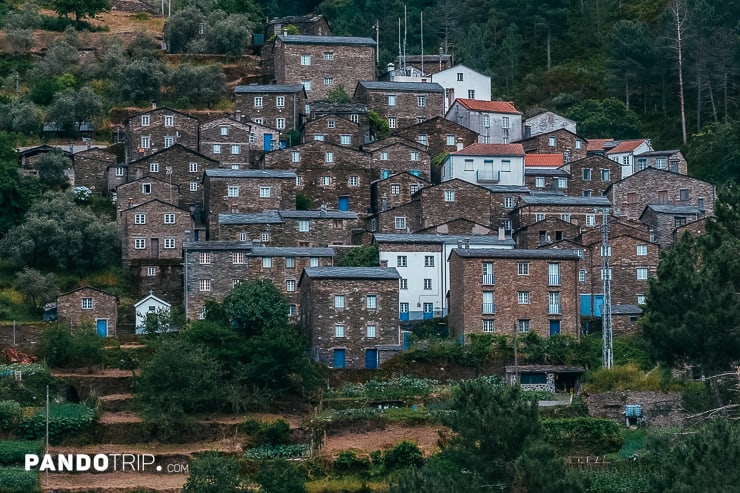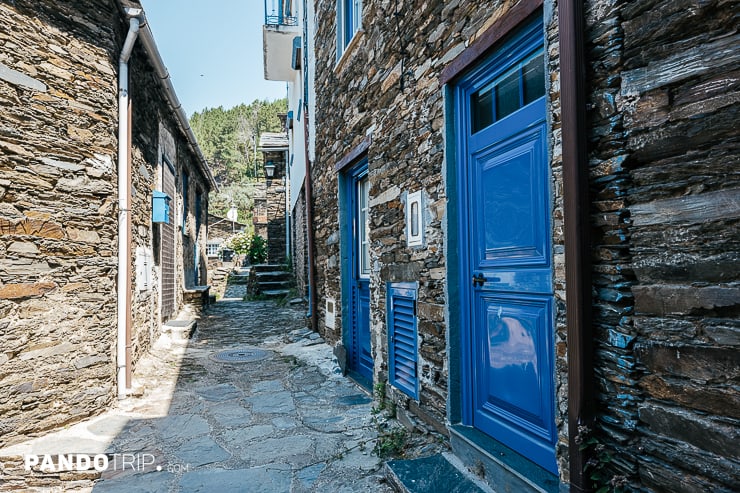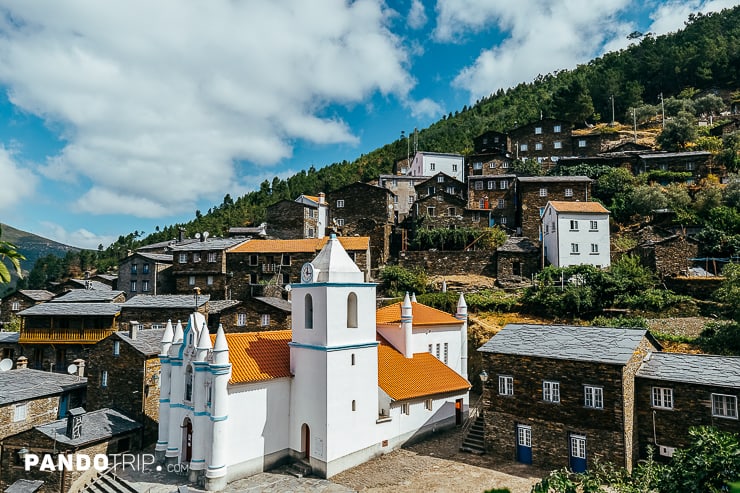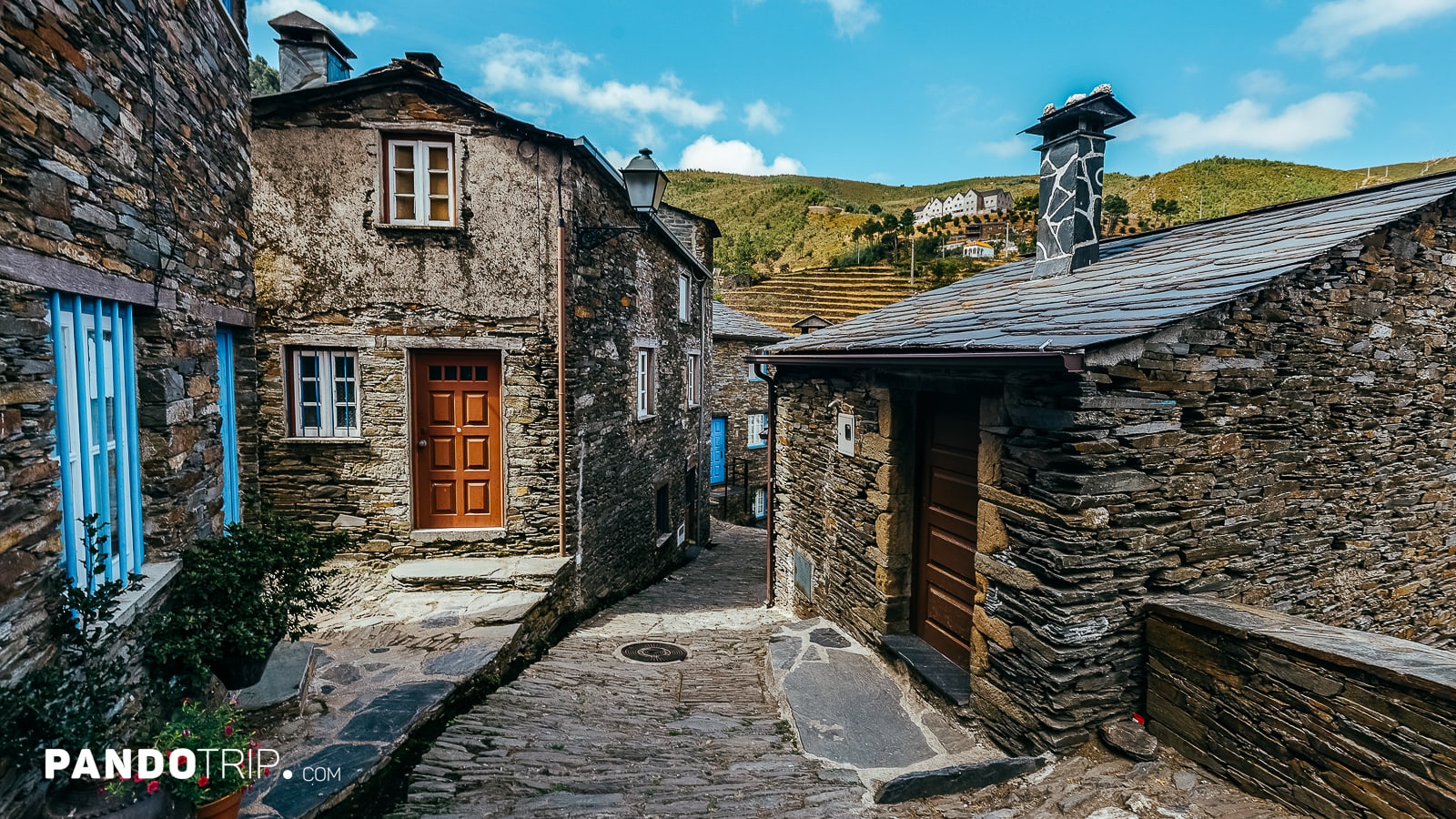The idea to write about Piódão came to me when we were working on an article about the best places to visit in Portugal. We had doubts about whether it was worth including in the list. Piódão’s story hadn’t prominently featured in the grand historical narratives of Portugal, making it somewhat of an enigmatic destination. Additionally, it remained relatively unknown for a long time, often overshadowed by more renowned sites. And only in recent times, it has become popular and well-known mainly for its photogenic appearance.
However, Piódão’s appeal goes beyond its picturesque qualities. Undeniably, the town is photogenic, perfect for any Instagram feed. But Piódão’s true essence lies deeper. It deserves visiting not just for its charming looks, but because it stands as a living monument to human resilience and endurance.
As we explore Piódão, we aren’t just walking through narrow, winding streets; we’re tracing the footsteps of generations who have carved out a life on this rugged terrain. This is more than a travel story; it’s a tale of survival, a narrative that adds depth and texture to the picturesque scenes of this remarkable village. The town’s photogenic qualities may draw visitors in, but its true appeal lies in the stories of persistence and community etched into its ancient stones.
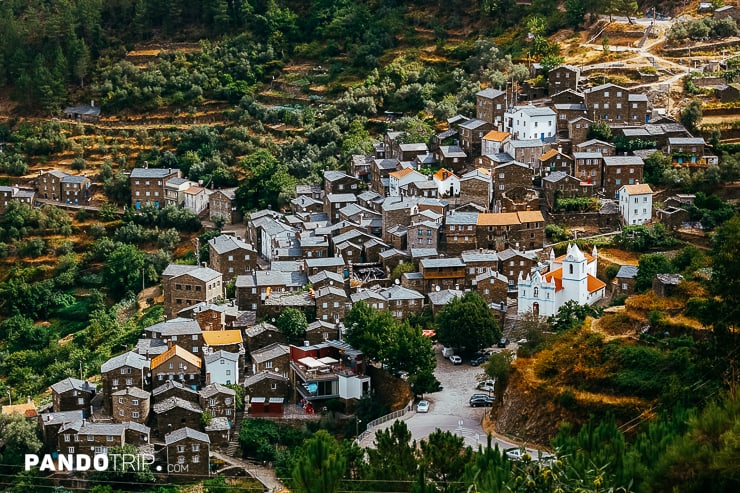
Piódão and the Schist Villages: A Symbol of Central Portugal
Piódão is often associated with the Schist Villages, a network of 27 historic communities spread across Central Portugal, known for their schist stone constructions. While Piódão shares this architectural hallmark, making it a trademark feature of the region, it stands apart in its historical significance. Unlike many Schist Villages that were part of a restoration project in 2000, Piódão is recognized as one of the “12 Historical Villages of Portugal.” This program, initiated in 1991, focused on restoring and enhancing a series of villages in the Beira Interior region.
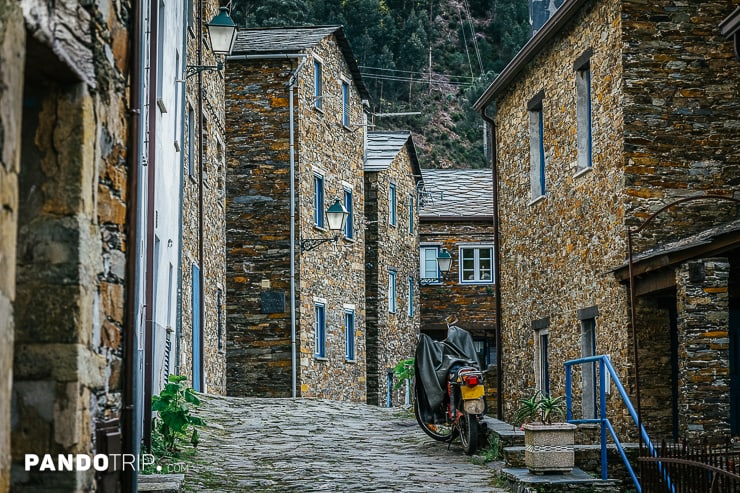
Architectural Contrasts: Schist Stone Among White Walls
Winding up the steep, serpentine road to Piódão, your first glimpse of the village’s slate-roofed homes, clinging to the hillside, offers a startling visual departure from typical Portuguese villages. While Portugal is often recognized for its whitewashed villages like Albufeira or Óbidos, Piódão presents a stark contrast with its darker, more earthbound aesthetic. Here, the conventional Portuguese palette of white and red is replaced by the deep, rich hues of schist stone.
Made from locally-sourced slate, these schist houses glisten in the sunlight, casting a unique blue-gray sheen across the buildings. The village’s narrow, steep streets meander through the rugged landscape of the Serra do Açor mountains, adding to Piódão’s picturesque charm while seamlessly blending its cascading appearance into the mountainside.
Piódão’s architecture, while visually striking, is rooted in practicality. The use of schist stone, a readily available local resource, was a necessity rather than a choice. Unlike whitewashed coastal areas where white exteriors reflect sunlight and keep homes cool, Piódão’s use of dark stone adapts to the mountain climate. Schist retains warmth from the sun during the day and releases it slowly at night, providing warmth in the colder mountain climate.
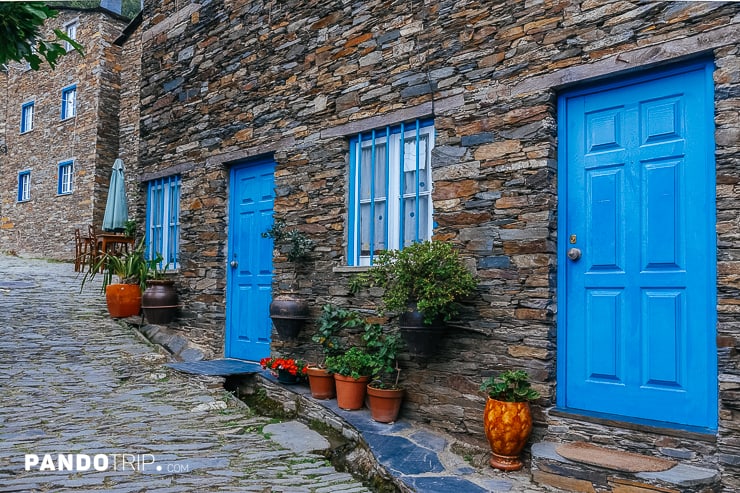
The village layout is also strategically practical, designed to shield from wind and harsh weather. The streets, etched with irrigation ditches called “levadas,” are cleverly engineered to manage water flow. These channels carry water from the mountains, running alongside the streets in the village. You can hear the soothing sound of running water when walking through the village.
The blue doors and trim of the schist houses are another practical element that fascinates visitors. While blue pigment was more expensive and less common in many places, in Piódão it was more affordable due to local production methods.
This architectural dichotomy reflects Portugal’s diverse history and geography. The whitewashed coastal towns reflect the country’s maritime legacy. In contrast, Piódão’s slate dwellings symbolize the resourcefulness and ingenuity needed to thrive in the harsh Serra do Açor mountains. Piódão’s story of resilience is woven through its ability to adapt creatively to environmental constraints.
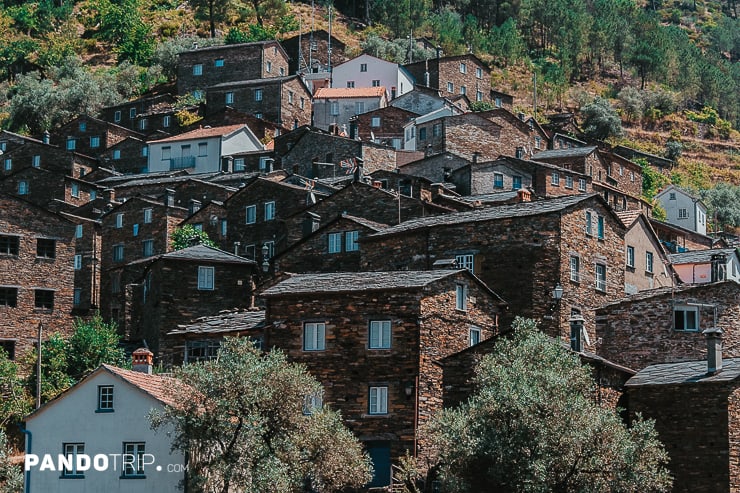
The Enduring Mystery of Piódão’s Past
While the charming schist stone dwellings of Piódão evoke a medieval aesthetic, the origins of this remarkable village remain shrouded in mystery. With little documented evidence of its early history, Piódão’s past has become steeped in legend and speculation.
The village’s name offers the first clue, with “Piódão” believed to derive from the medieval “Casal Piodam.” This suggests the village was founded in the Middle Ages, likely sometime between the 12th and 14th centuries. Beyond the name, the specifics of Piódão’s beginnings and early days are scarce.
Its hidden, isolated setting nestled in the Serra do Açor foothills has fueled theories that the village initially served as a haven for fugitives evading justice. According to local lore, one of the murderers of Inês de Castro, the famed lover of King Pedro I, escaped the king’s wrath by hiding in Piódão in the 14th century.
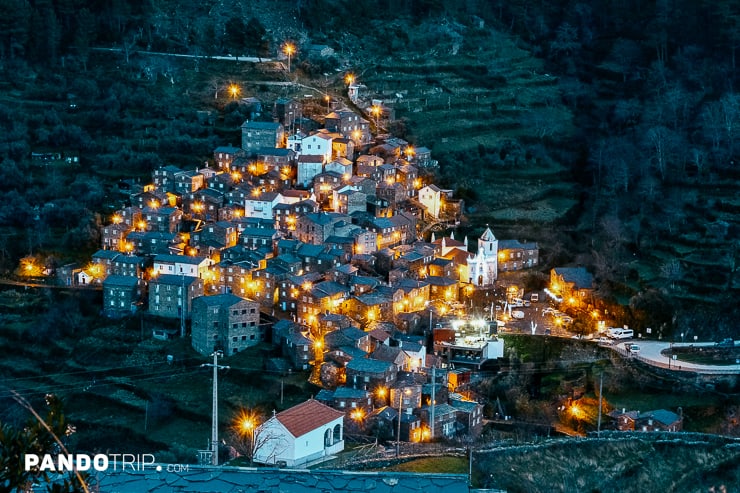
While the truth of this legend is uncertain, Piódão’s secluded location made it an ideal refuge from authority for those seeking anonymity. This isolation would continue to define the village for centuries.
Architectural clues also hint at Piódão’s medieval roots. The uniformity of its schist stone dwellings suggests the village was built or rebuilt in a coordinated effort sometime between the 16th and 17th centuries. This was likely spurred by the discovery of gold deposits in the region, bringing wealth that demanded a more structured settlement.
For most of its history, Piódão persisted in near-total seclusion. It remained disconnected from any main road until as recently as 1974. Without access to the outside world, Piódão was fully cut off during winter snowstorms. This isolation preserved the village’s medieval character, keeping it relatively untouched by modernization over the centuries.
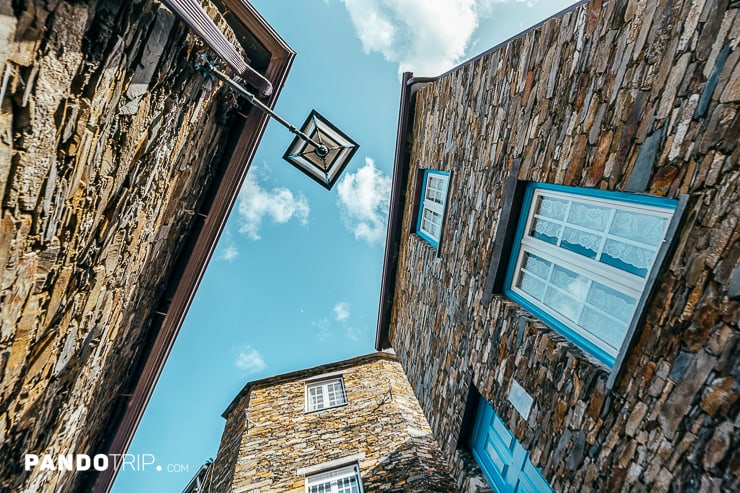
Residents carried on the agricultural practices and crafts of their ancestors. Self-sufficiency was necessary for survival in this isolated landscape. Piódão’s isolated past forged a tight-knit community where neighbors depended on each other to endure the harsh mountain environment.
Despite remaining a mystery in many ways, Piódão’s cultural authenticity and historical significance are undeniable. This led the Portuguese government to classify it as a Place of Public Interest, recognizing Piódão as a living window into the past. The village’s enduring isolation has preserved a way of life connected to its medieval roots, making it a truly unique historical gem.
The Challenging Journey to Piódão
Getting to Piódão takes commitment, as I learned firsthand trying to navigate the winding mountain roads leading to this remote village. The only way to access Piódão is by car, as there is no public transportation available. My journey began in Coimbra, the closest major city, located about 95 km from Piódão. Despite the relatively short distance, the trip took a grueling 2 hours. More experienced drivers will probably spend a bit less time, but still need to be prepared when navigating the snaking uphill roads.
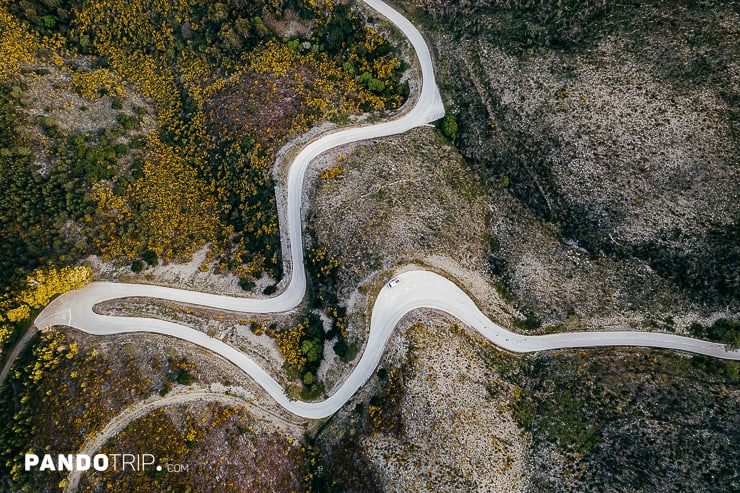
Leaving Coimbra, the initial hour of driving lulled me into a false sense of ease. But as I approached the steep slopes of the Serra do Açor, the road progressively narrowed while becoming far more serpentine. My laidback road trip rapidly transformed into a white-knuckled rollercoaster ride.
The last 30-40 minutes tested my composure as an extremely cautious driver. With each hairpin curve and barely-wide enough single lane, I gripped the steering wheel tighter. Several times I considered turning back, but there were no spots wide enough to attempt a U-turn on the perilously winding mountain passes. Going forward was my only option if I wanted to finally glimpse this centuries-old village.
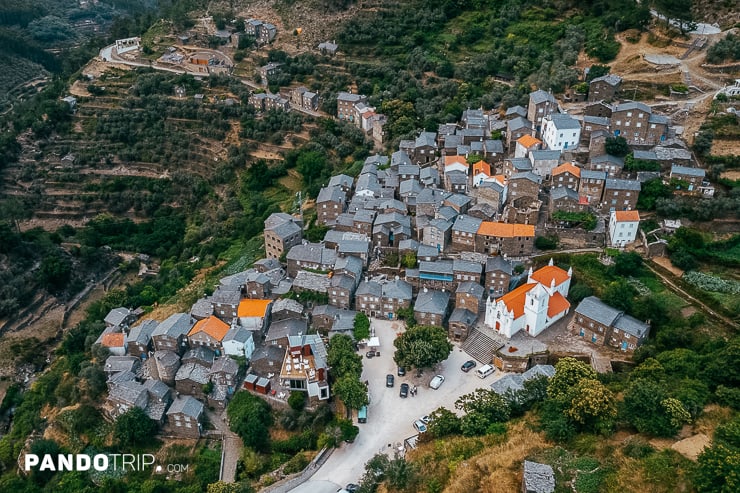
For the record, my fear of winding mountain roads is much higher than the average driver’s. So while the trip to Piódão tested my nerves in the steep Serra do Açor, the drive likely wouldn’t be as harrowing for most people. Still, some caution is warranted to safely navigate the tight bends leading to this centuries-old mountain village.
However, if you would prefer to avoid driving yourself, organized tours are available. I found a few options on the Viator, though I have not tried them personally so cannot vouch for their quality.
Exploring Piódão
Once you arrive in Piódão, it’s up to you to decide what to experience there. Most visitors usually spend about half a day here and leave with lots of photos to fill their Instagram feeds. It’s certainly full of photogenic spots that, with a bit of creativity, look stunning. For a more interesting photo, dress in light clothes with one bright blue or red element, so you stand out better against the darker surroundings.
Although the village is quite commercialized and has adapted to the influx of tourists, take the time to wander the streets and look for authentic corners. Put your phone aside and try to feel and hear what these ancient walls might be telling you. Imagine how people have lived here over the centuries.
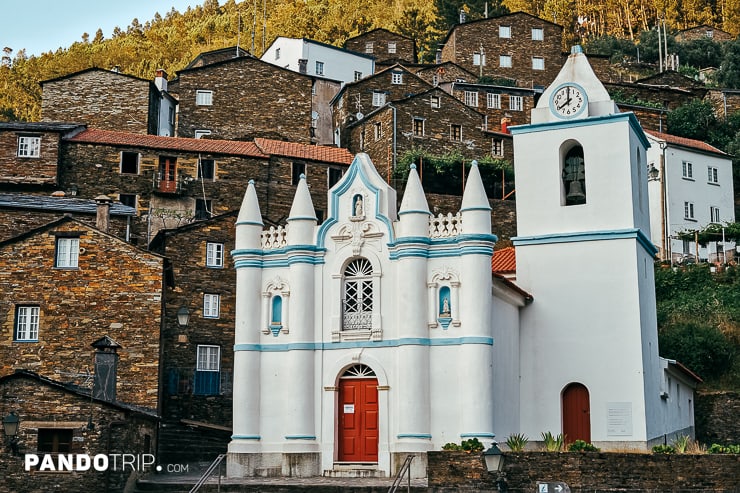
One site you won’t miss in Piódão is the Main Parish Church, whose bright white facade contrasts starkly with the surrounding houses. But it’s not only the color that makes the 17th century church stand out – its architecture is completely out of character with central Portugal, bearing more similarities to churches in the south like the Nossa Senhora da Anunciação in Mértola or the Chapel of Saint Andrew in Beja.
If you visit during the summer months, check out the Praia Fluvial de Piódão, one of Portugal’s unique river beaches. Those “beaches” are mostly found in Central Portugal and are a unique alternative to coastal beaches. Although die-hard beach lovers are unlikely to be impressed by the lack of sand and the cool water temperatures, maxing out at 20°C, it is an experience unique to this region of Portugal.
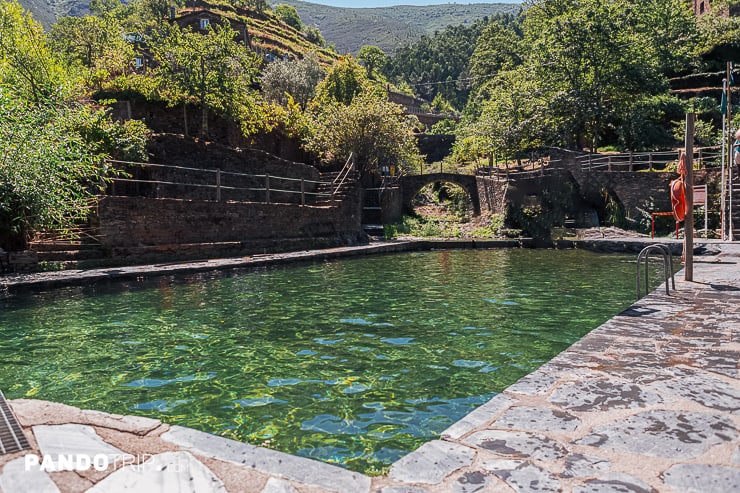
Hiking is another attraction in Piódão, with more than 10 routes to choose from. The most popular is the 2-hour route from Piódão to Foz d’Egua, listed by Lonely Planet as one of the best hikes in Portugal. I can agree with them on that, but Lonely Planet has been a bit wrong in saying that the hike is a great place “to escape the crowds, and enjoy the serenity of this magnificent region.” You’ll definitely feel a lot more calm on the way up than in town, but the route is quite popular so expect company. Nevertheless, it’s a worthwhile hike if you’re already in the area. When you arrive in Foz d’Egua, be sure to take a dip in the Praia Fluvial de Foz d’Egua. It’s another great example of Portugal’s river beaches.
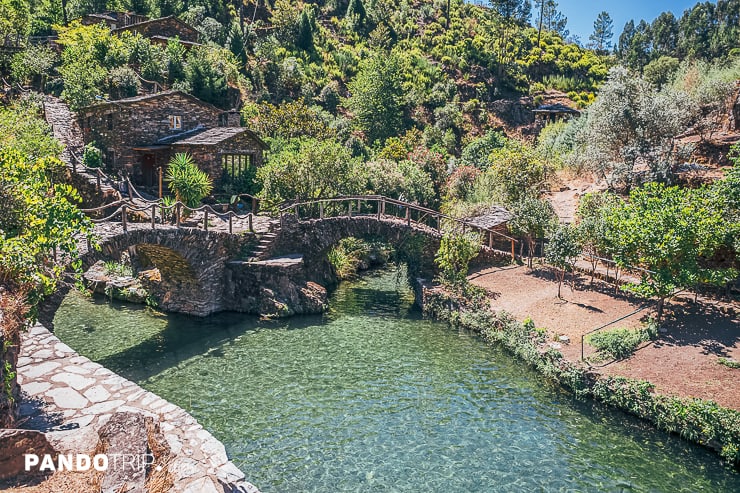
Is It Worth Visiting Piódão?
In short – it depends. As mentioned earlier, we initially had doubts about including Piódão in our list of top places to visit in Portugal. However, after exploring its history, architecture, and culture, it became clear that this unique village deserves a spot, standing as a one-of-a-kind example of central Portugal’s essence.
Yet, with its remote location and small size, is Piódão worth the challenging journey for the average traveler? The answer depends on the type of vacation you’re seeking.
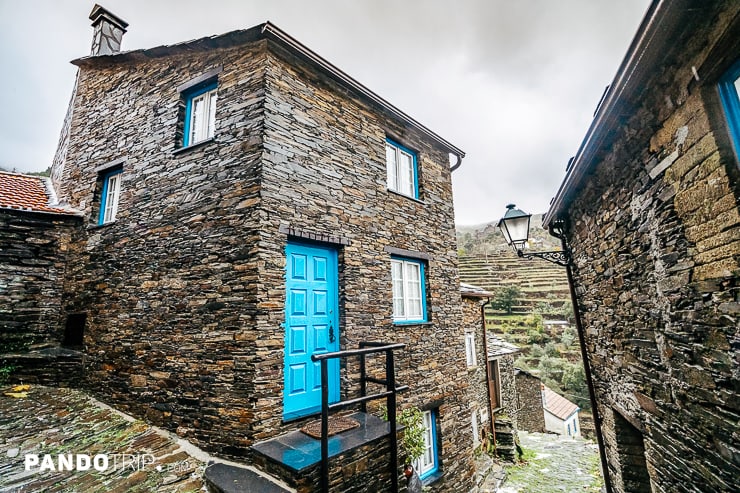
For those with only a week to spend in Portugal, and whose priority is enjoying sun, sand, and beaches, Piódão may not be the best use of your limited time. The difficult mountain roads leading to the village take nearly a full day driving round-trip from cities like Lisbon or Porto. And while picturesque, Piódão is quite small, with only a few hours needed to wander its charming streets. For a short beach-focused holiday, the time investment required to reach Piódão may not feel worthwhile.
However, for travelers with more flexible time to explore Portugal’s diverse regions, especially those already planning to visit central Portugal, Piódão is absolutely worth experiencing. As an exceptionally well-preserved medieval village, and for its striking schist architecture unlike anywhere else in Portugal, Piódão offers an authentic glimpse into the country’s past.
So in summary – if your Portugal trip centers around the beaches, Piódão may not warrant the effort required to visit properly. But for those with more time to explore central Portugal’s hidden gems, the photogenic village of Piódão and its enduring medieval charm make the challenging journey there well worth the effort.
